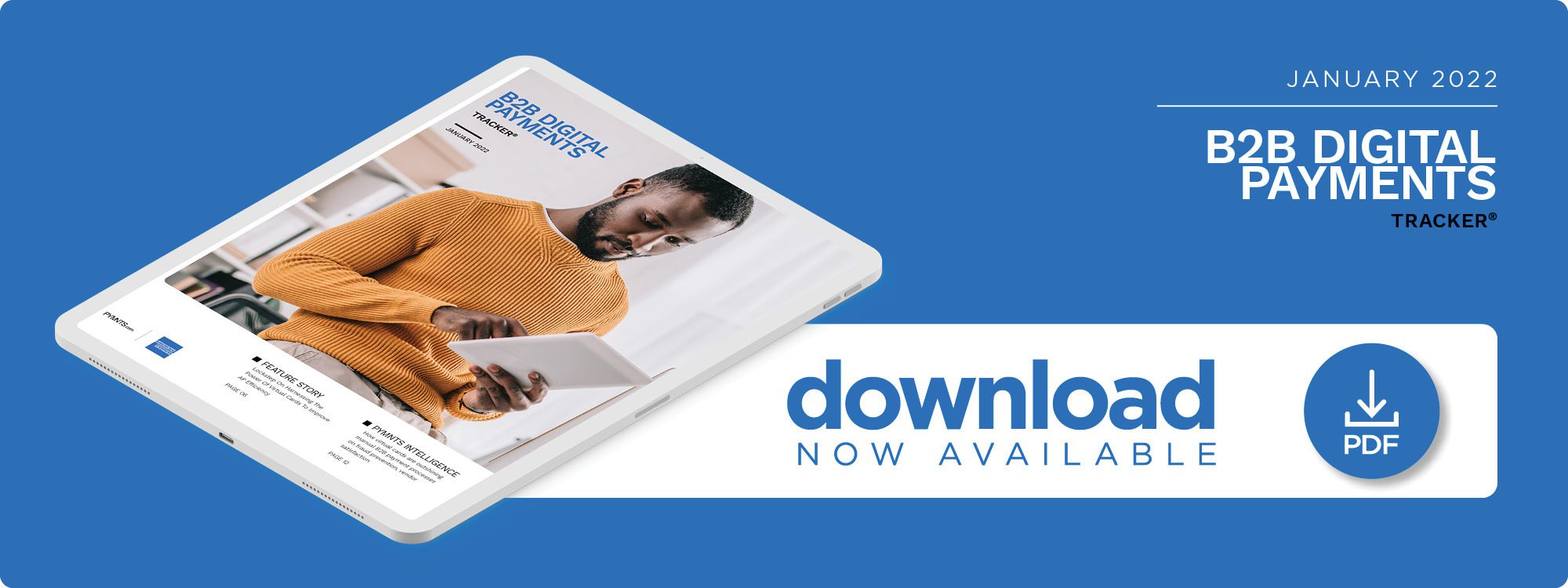Lockstep on Harnessing the Power of Virtual Cards to Improve AP Efficiency

More than 60% of finance professionals say their businesses have suffered vendor payment and invoice processing delays after going remote. In the B2B Digital Payments Tracker, Matthew Shanahan of automated collections software provider Lockstep, explains how virtual cards help remote AP departments gain efficiencies.
The need for digital channels during the pandemic highlighted the shortcomings of manual payment processes for accounts payable (AP) departments. When it comes to their greatest operational challenges, 62% of financial professionals experienced delays in expense reimbursement, invoice processing and vendor payments after shifting to remote work, for example. Matthew Shanahan, co-founder and chief strategy officer at connected accounting FinTech company Lockstep, said such pain points often are what lead to shifts within the industry, and one major trend now making a difference in the business-to-business (B2B) sector is the use of virtual cards for improving AP efficiencies.
“Powering automation is one of the things that virtual cards do and, if you’re in a remote situation, that’s exactly what you’re looking for,” Shanahan said in a recent interview with PYMNTS. “Getting rid of paper lets you skip having to go into the office, and using a cloud-based solution lets you get accounting workflow out of personal inboxes and into a shared workspace where virtual cards enable efficient payments.”
Virtual cards are a type of payment tool that works much like credit or debit cards, except the card numbers are randomly generated and do not exist in a physical manner, adding a level of security that only enhances their appeal. Their global worth is anticipated to reach $6.8 trillion by 2026, $4.9 trillion higher than the 2021 valuation, suggesting that a growing number of businesses are recognizing the simplicity of their use compared to slow and costly outdated methods such as paper checks. B2B payments account for the majority of payments processed via virtual cards, and chief financial officers must take note or risk falling behind their more digital-forward competitors.
Manual Payment Processing Creates Roadblocks
With the recent spike in cross-border eCommerce sales, businesses increasingly are looking for ways to expand their reach. Conducting transactions in different regions means processing and handling local currencies, as well as catering to a seemingly endless array of payment preferences, however, and manual processes will only hold these companies back. Even so, PYMNTS research shows that nearly one-quarter of B2B firms still are using paper checks to process payments.
“If you’re trying to grow [your business], manual processes are the biggest challenges,” Shanahan explained. “Manual processes hold you back from creating scale in your business. If you suddenly get 1,000 new customers, you add on 50 new vendors or you make an acquisition, your processes need to suddenly scale, but if the processes are manual, they’ll hold you back … The other [challenge] is that your third-party relationships become strained when you can’t scale because your manual process make you less responsive and reliable.”
Fraudsters often take note of such growth occurring. Half of all corporations experienced serious fraud attempts or losses during the last two years, with AP named the most commonly attacked sector. Business email compromise (BEC) was markedly one of the most detrimental fraud schemes used to target invoices or payments throughout the pandemic.
“If you’re sending your routing information, your account numbers and things like that through email … that’s a situation where your financial data can be compromised,” he continued. “It’s easily forwarded, and somebody can get hold of that document.”
Virtual Cards Enable B2B Businesses To Pay Their Vendors More Quickly and Safely
Manually processing invoices inherently is error-prone, time-intensive and inefficient, and 20% of CFOs agree that legacy systems often result in excessive delays. By sending and receiving payments via virtual cards, however, finance and accounting teams then can focus on more strategic initiatives to improve customer relationships and help their organizations grow.
“Virtual cards are great in a couple of ways, especially if you combine [them] with workflow automation,” Shanahan said. “With a virtual card, you can have a unique card number for every one of your transactions that you do, which is pretty cool, because now you’ve got this unique identifier on the virtual card itself. So that unique identifier can be tied to both the purchase order and the payment, creating this link between them.”
Virtual cards also are not linked to the business’ main account but rather to a digital wallet, so the company’s sensitive data is at a lower risk. They also reduce the possibility of vendors accidentally reusing a company’s account information to process an illegitimate payment and help those vendors to be paid faster, especially for B2B organizations.
“[Virtual cards for AP processing] creates a lot of efficiency, a lot of traceability, a lot of control and security as a result of that,” he said. “And it’s very convenient. It’s less expensive when you’re doing it that way.”

